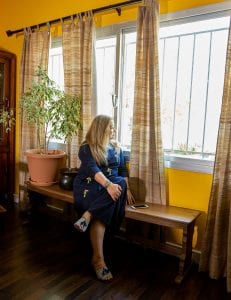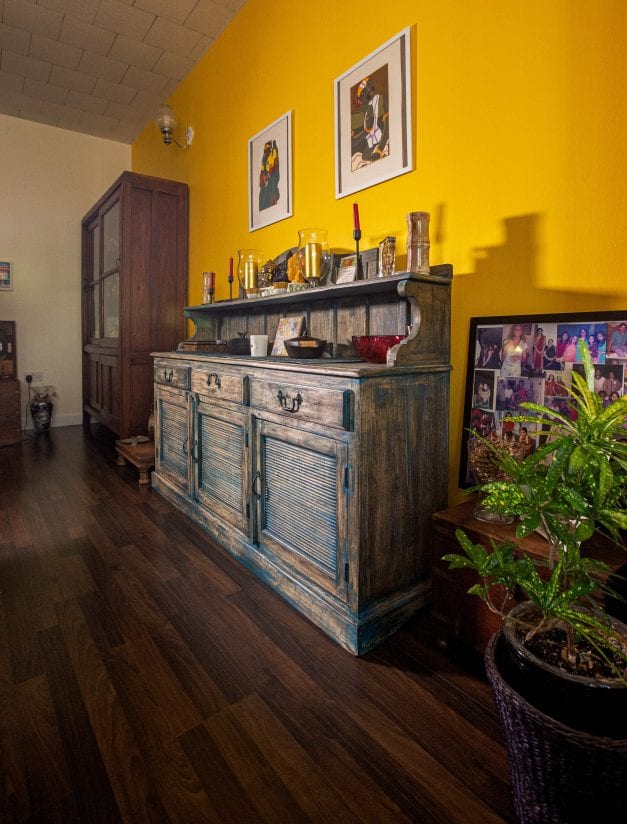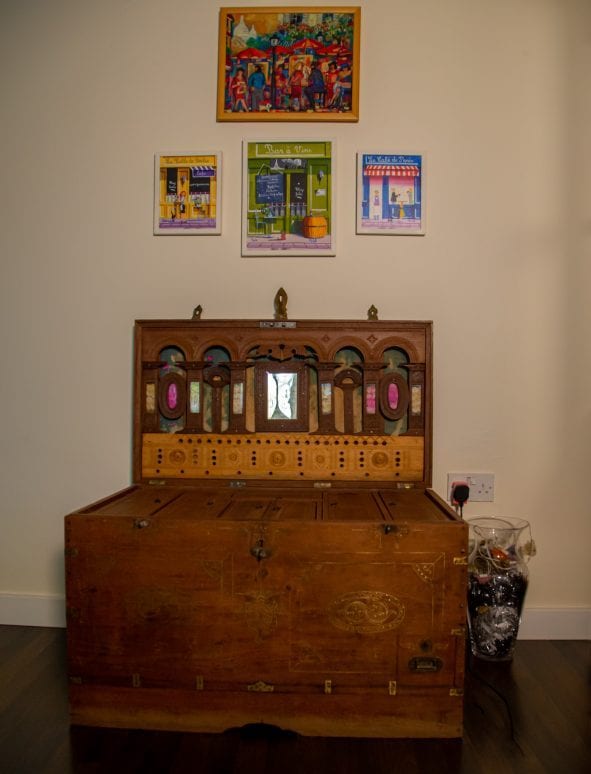A Medley of Colours
Sonali Raman is quite well-known in the field of fashion with her eponymous brand making ripples in the industry with its subtle colours and flowy designs. But in contrast to the understated use of colours in her clothing line, her house is a riot of colours. SCALE explores this personal space of the designer and VCU instructor Sonali Raman and her husband CEO of an advertising agency, Ashok Kumar. By Sindhu Nair. Photography by Shaji Panicker
Bright yellow walls, an abundance of greens splashed across with plants and bright fabrics up for display on the walls makes way for a medley of ideas and art; all of them coming together homogenously in a house that is an extension of Sonali’s palette in design.
“Each piece of furniture has been collected over the years. Most are vintage pieces that are highly priced for their memories and heritage value.”
The house of the couple is located within one of the oldest housing complexes of Doha, the JBK villas compound, and hence the space available is much more than what you would find in a recently constructed residential space. The house is partially shaded by large bougainvillea that gives a respite. As one enters the garden, the garage space that Sonali has very skilfully converted to her studio space is at the left corner. Wooden benches and tables line the doorway and the garage door recreated in wood and glass opens to a wide studio space that’s painted in shades of purple, which according to Sonali is the brand colours representing SR by Sonali Raman.
“This was not a very easy procedure,” she says, recounting her experience working with local painters in Doha, “I had to paint portions of the wall myself, to show them what I needed. It took a while but, in the end, we achieved what I was looking for.”
The studio is awash with light, thanks to the glass windows that let in the morning light, making the room extremely comfortable to work in.
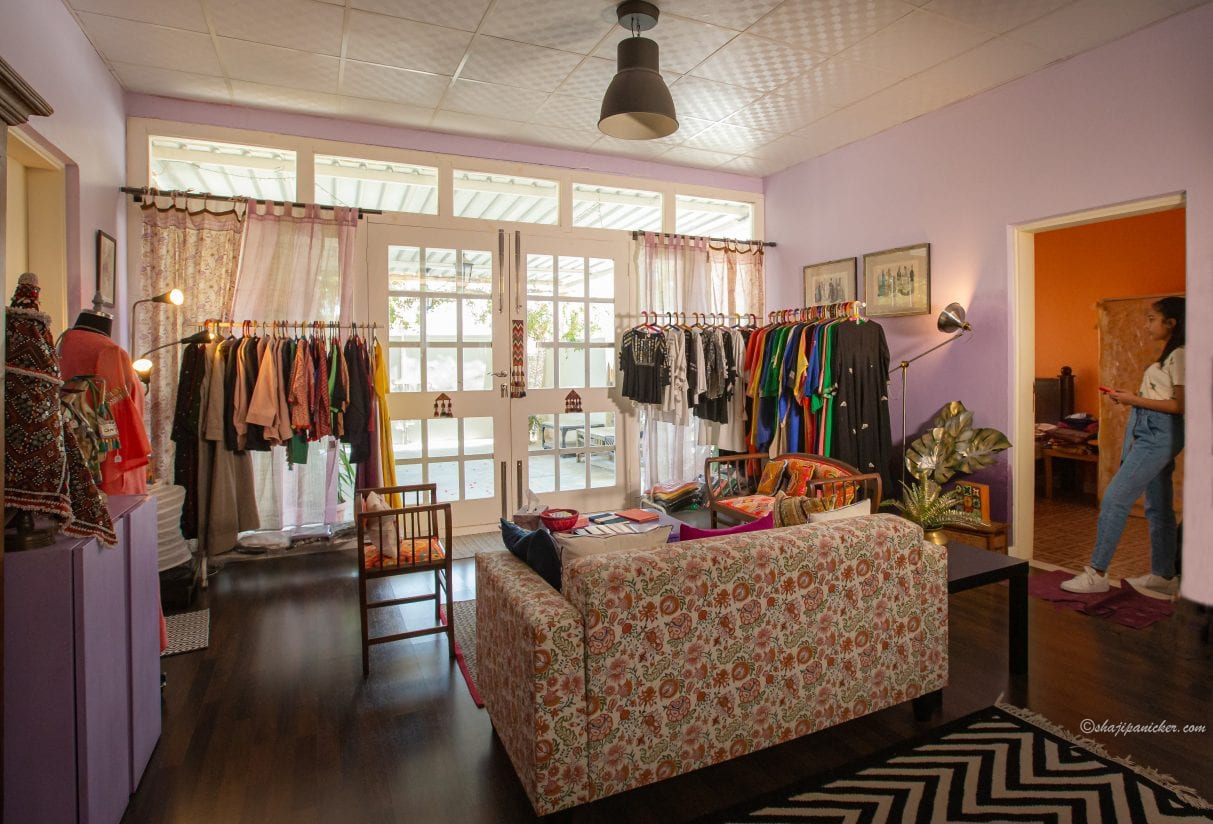 This space is framed by cloth racks laden with SR’s latest collections and the centre of the room has a cozy seating arrangement in traditional low seating bought from an Arabic store and reupholstered with the fabric of the cushions all handpicked by the designer herself.
This space is framed by cloth racks laden with SR’s latest collections and the centre of the room has a cozy seating arrangement in traditional low seating bought from an Arabic store and reupholstered with the fabric of the cushions all handpicked by the designer herself.
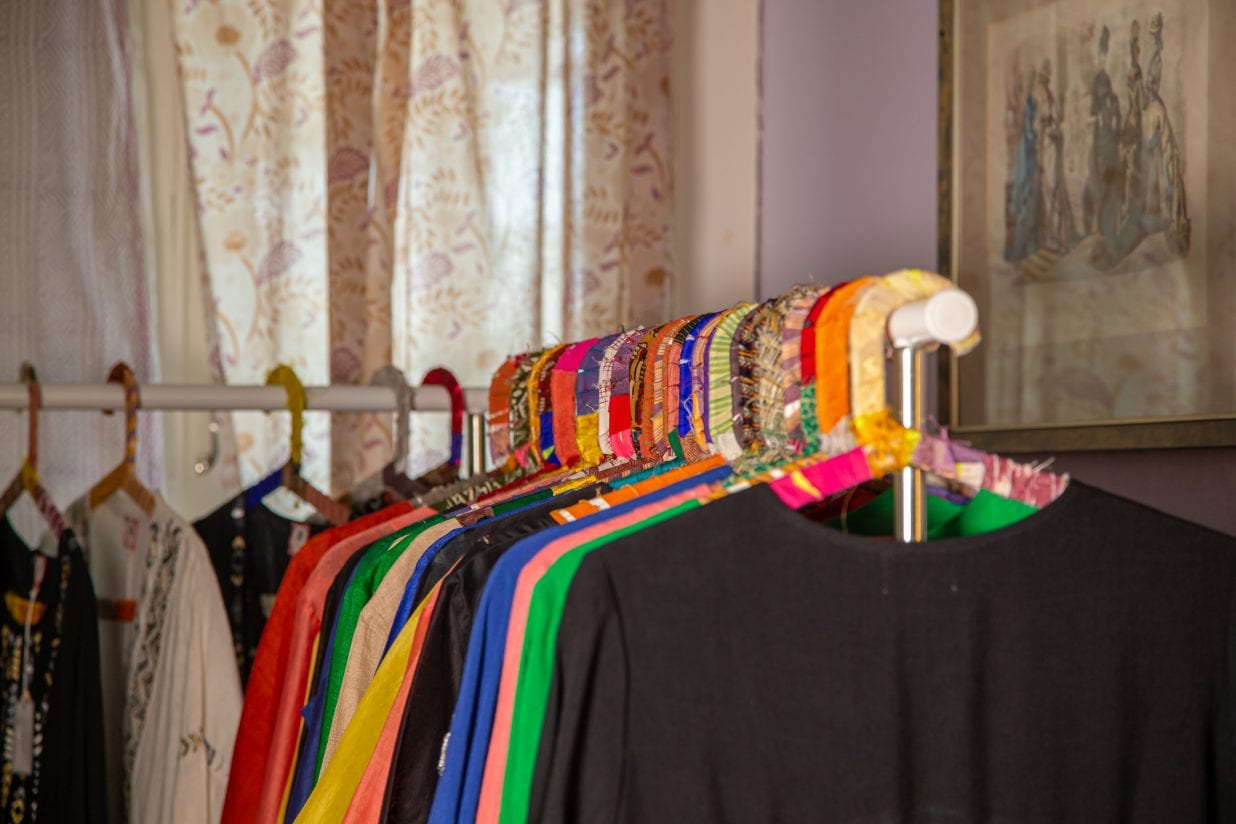
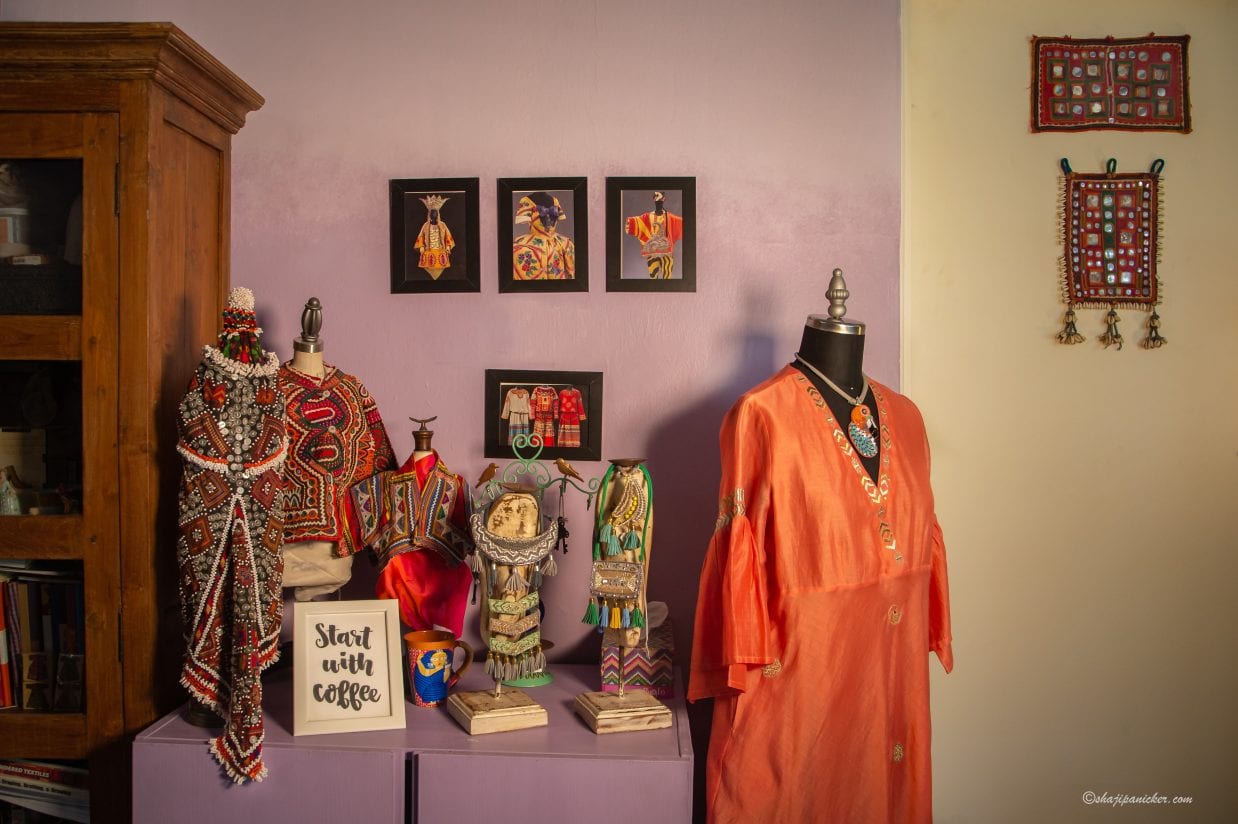
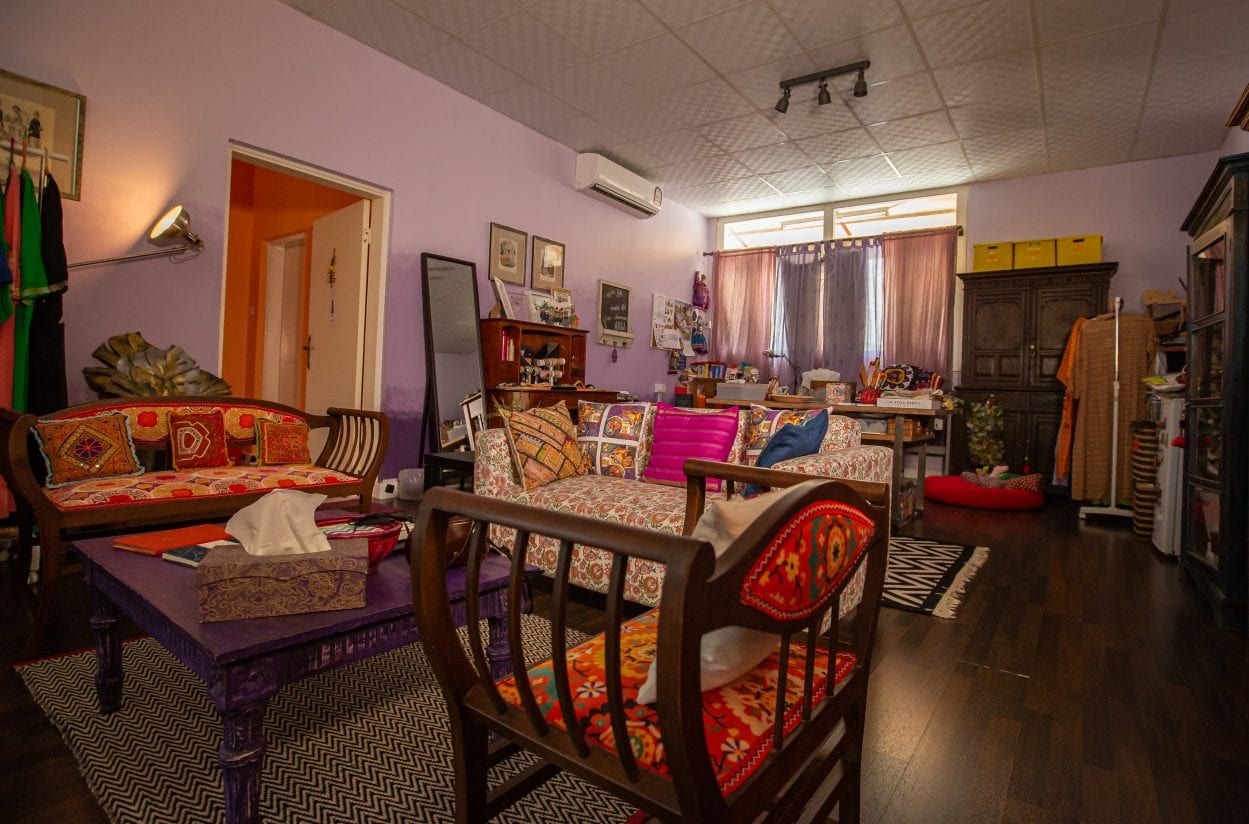 “I had mentally planned the furniture layout and knew where my workspace would be; the sewing machine had to be in the corner to catch maximum light,” says Sonali.
“I had mentally planned the furniture layout and knew where my workspace would be; the sewing machine had to be in the corner to catch maximum light,” says Sonali.
A low wooden table painted in purple, a distressed wooden cupboard in blue, a mannequin dressed up in the SR line, nooks and corners filled with colourful prints and the distinctive SR jewellery collection makes this space a creator’s haven. A place to come to get your creative juices flowing, and the space that Sonali prefers to be in when she is designing.
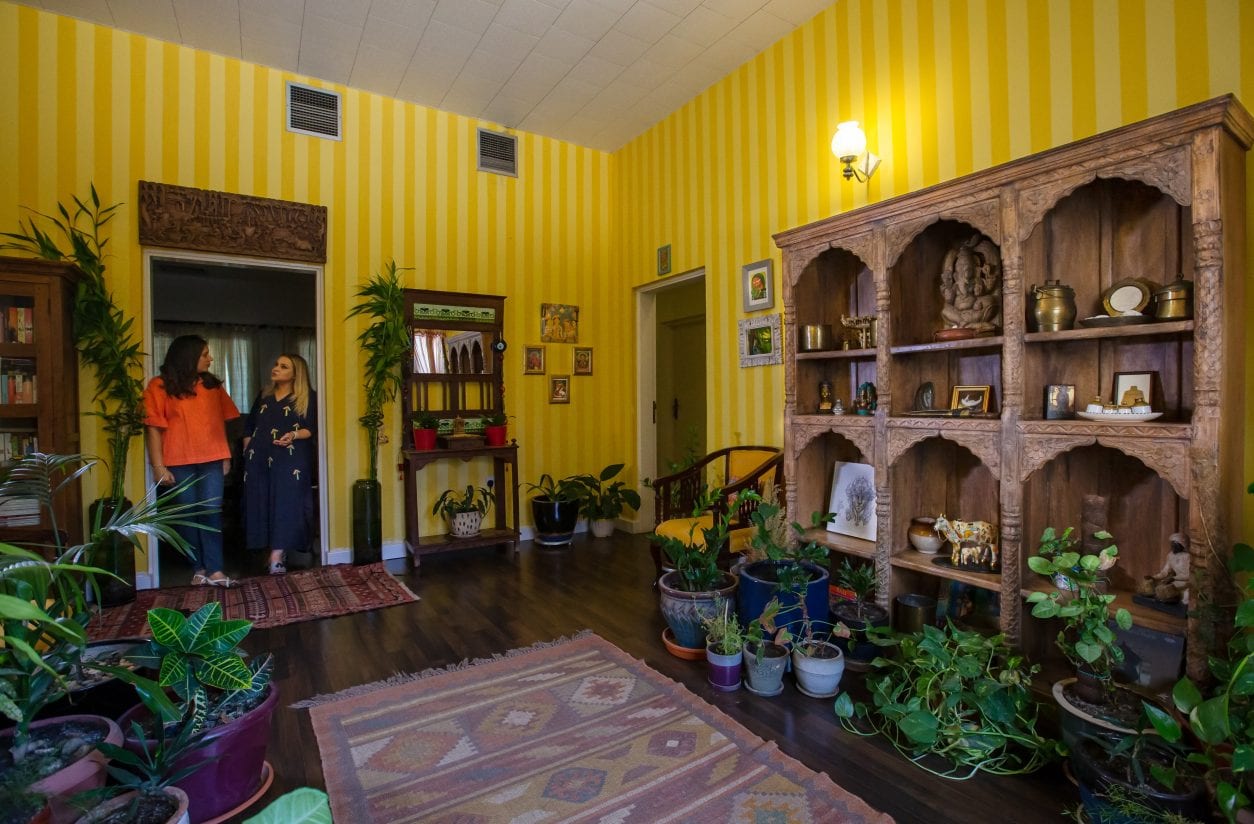 “The idea was to create a warm inviting space for clients to come, discuss fashion choices in a relaxed ambiance and shop at leisure,” adds Sonali.
“The idea was to create a warm inviting space for clients to come, discuss fashion choices in a relaxed ambiance and shop at leisure,” adds Sonali.
We move to the main part of her house and enter the house through the main door to the lounge or foyer area which happens to be Sonali’s favourite space, after her workspace, of course.
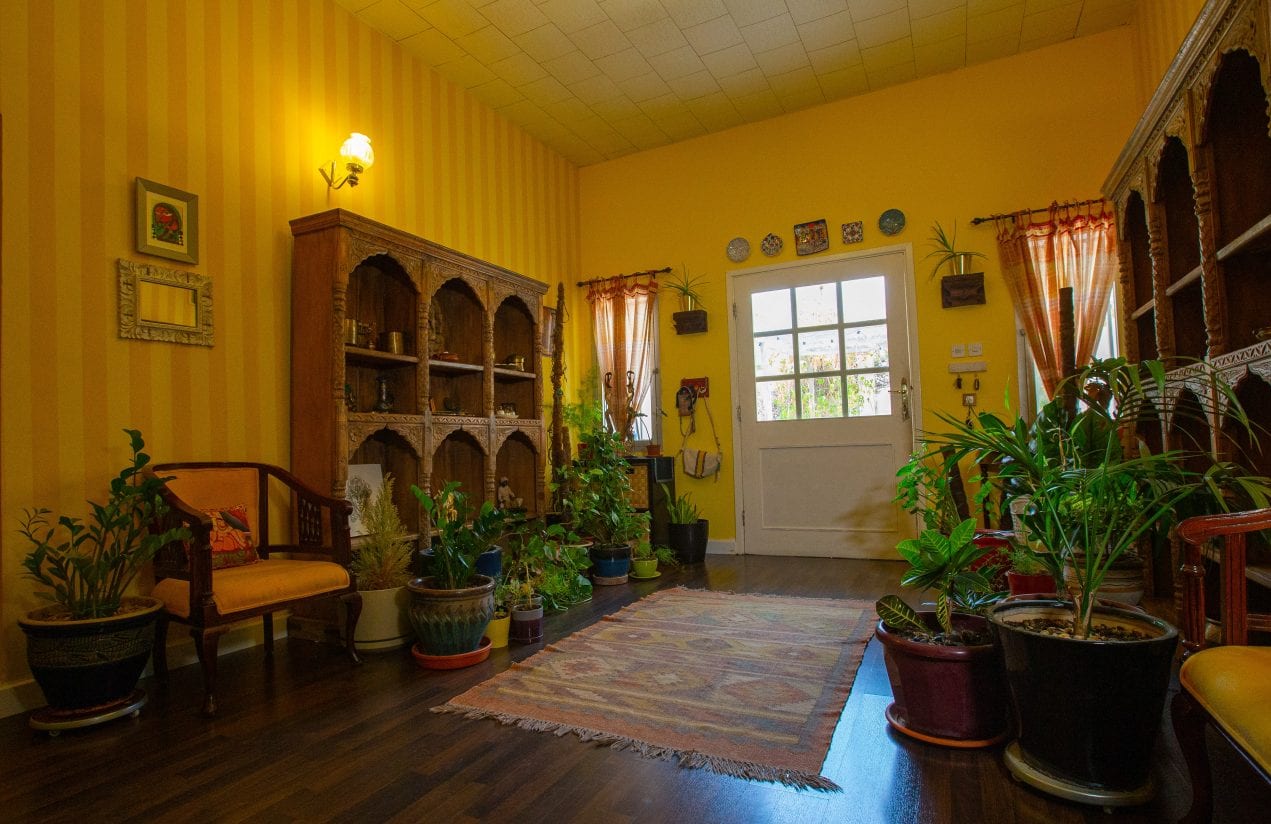 It is not difficult to imagine why; the walls are stripe-painted in yellow and the walls lined with heavy wooden show cupboards stuffed with artefacts that seem to transfer one to an art gallery. Brass vessels, porcelain dishes, a Kamadhenu cow, Indian idols, take positions of pride within this heavily carved wooden cupboard. A room that has so many details in it that you can spend hours looking and admiring each work of art.
It is not difficult to imagine why; the walls are stripe-painted in yellow and the walls lined with heavy wooden show cupboards stuffed with artefacts that seem to transfer one to an art gallery. Brass vessels, porcelain dishes, a Kamadhenu cow, Indian idols, take positions of pride within this heavily carved wooden cupboard. A room that has so many details in it that you can spend hours looking and admiring each work of art.
“The brass vessels are all family heirlooms, most of them are cooking vessels which I use as decorative pieces. These are quite prized possessions because each of them has been used in my grandmother’s kitchen and has memories of a bygone era,” she says.
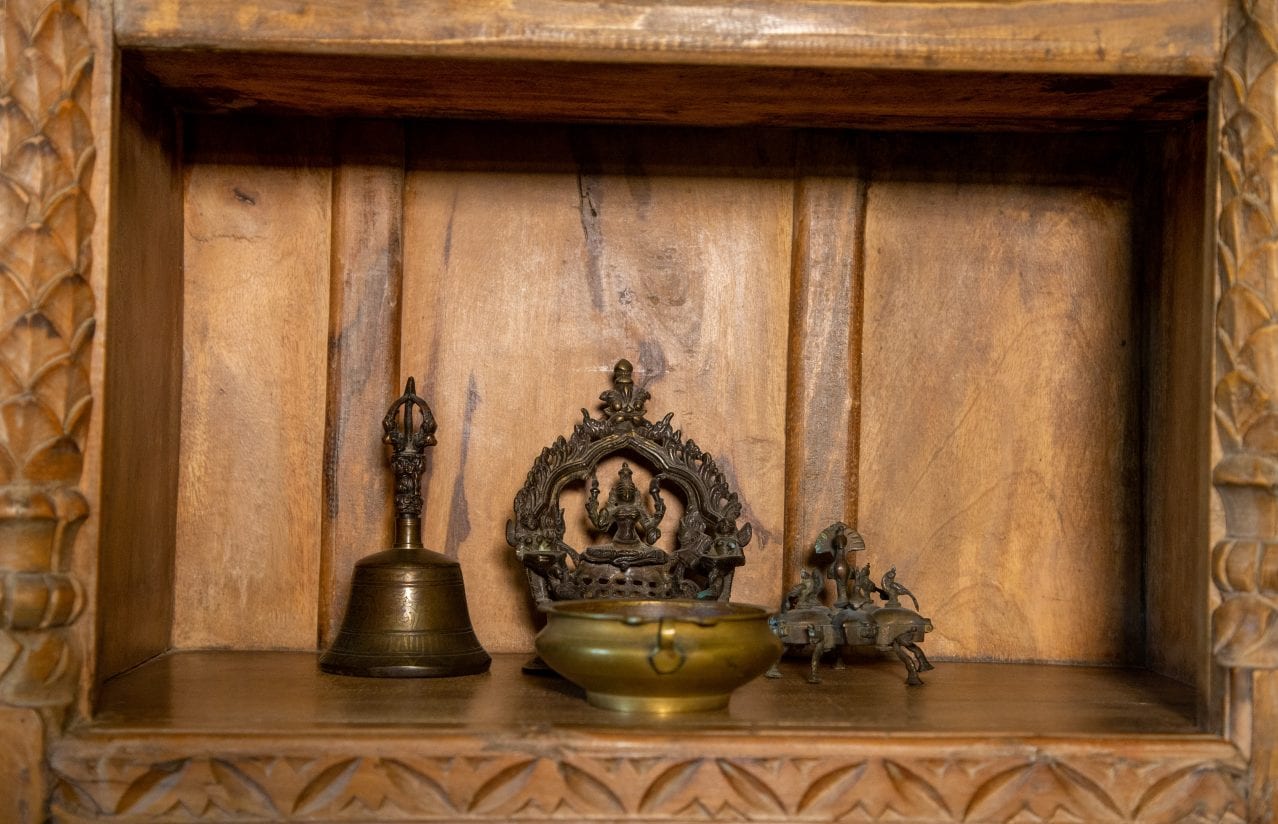 The textile pieces on the wall have some significance too. “This is an antique textile piece from Uzbekistan. The type of work is called Suzani, which is a type of embroidered and decorative tribal textile made in Tajikistan, Uzbekistan, Kazakhstan and other Central Asian countries. Suzani is from the Persian word, Suzan which means needle. The art of making such textiles in Iran is called Suzandozi.”
The textile pieces on the wall have some significance too. “This is an antique textile piece from Uzbekistan. The type of work is called Suzani, which is a type of embroidered and decorative tribal textile made in Tajikistan, Uzbekistan, Kazakhstan and other Central Asian countries. Suzani is from the Persian word, Suzan which means needle. The art of making such textiles in Iran is called Suzandozi.”
What makes Sonali’s house stand out is the fact that each of her furniture has been handpicked from India and shipped to Doha, unlike most other houses recreated through furniture sourced from Doha.
“Each piece of mine has been collected over the years. Most are vintage pieces which I have been saving for my house. Some of the furniture has been worked on, like this table which was in bright blue and I had it toned down to have a distressed look,” says Sonali.
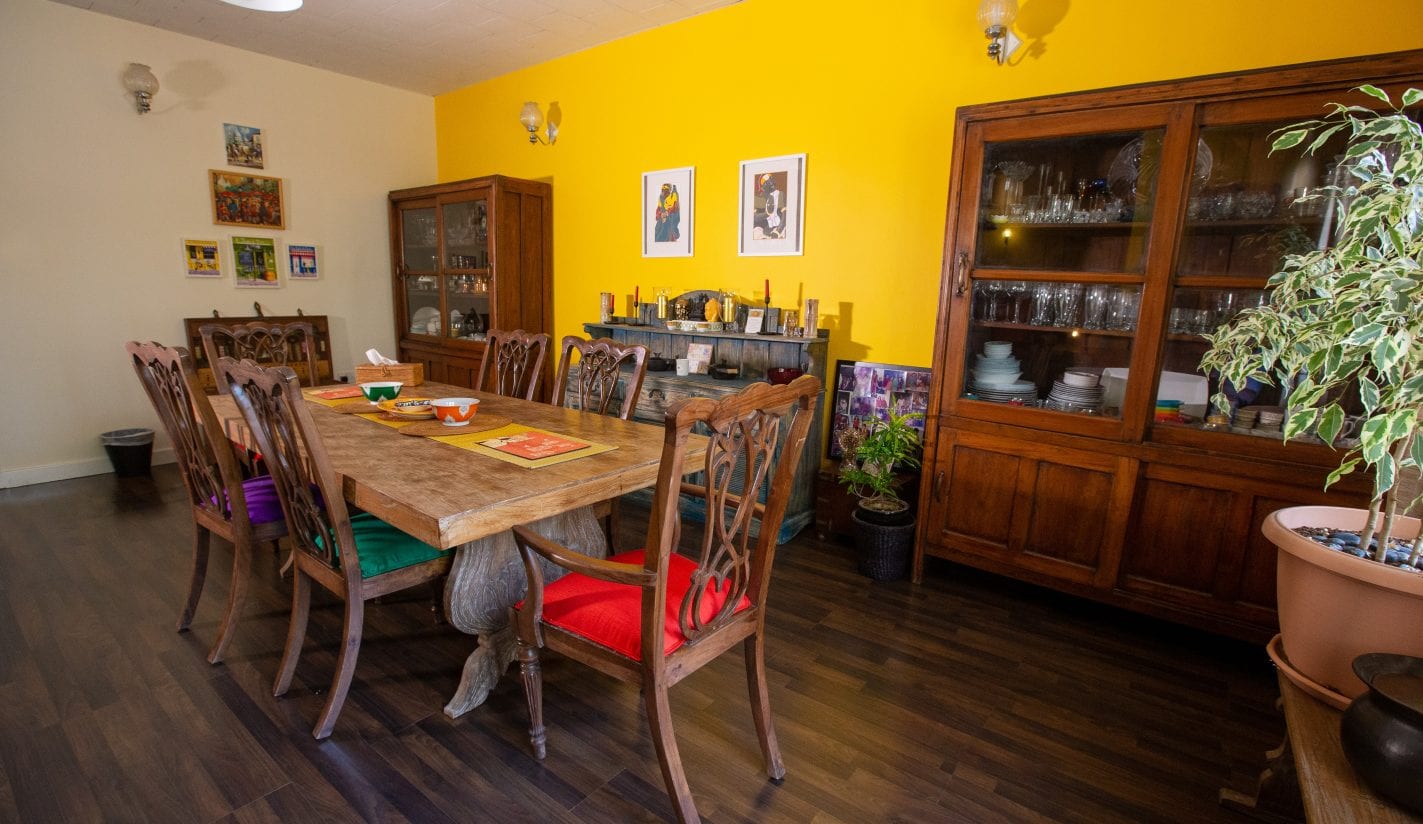 A Chettinad dowry chest takes pride position in the dining room. Made in teak wood, and decorated with mirrors and numerous drawers inside to keep all the bride’s valued possessions with a longitudinal drawer to keep a roll of paper that accounts all the gifts that’s sent to the bride’s new home are all interesting details of the dowry chest. While it does throw light on the old Indian tradition of dowry, it also brings to attention the diligence and care of the carpentry work exhibited by the workmen of that era.
A Chettinad dowry chest takes pride position in the dining room. Made in teak wood, and decorated with mirrors and numerous drawers inside to keep all the bride’s valued possessions with a longitudinal drawer to keep a roll of paper that accounts all the gifts that’s sent to the bride’s new home are all interesting details of the dowry chest. While it does throw light on the old Indian tradition of dowry, it also brings to attention the diligence and care of the carpentry work exhibited by the workmen of that era.
“There was a space to keep dried flowers which is the first sensory smell that is noticed as soon as the mother-in-law opens the chest, thus awakening a sense of happiness in the household with the arrival of a new bride. The mirrors on the lid of the chest was also to evoke a feeling pf pleasure when the mother-in-law catches her own reflection in it. There was also a space for the gift that the mother of the bride sends for the new family. The bottom space of the chest is to store clothes and there were secret compartments inside too,” says Sonali about this 100-year-old possession of the family.
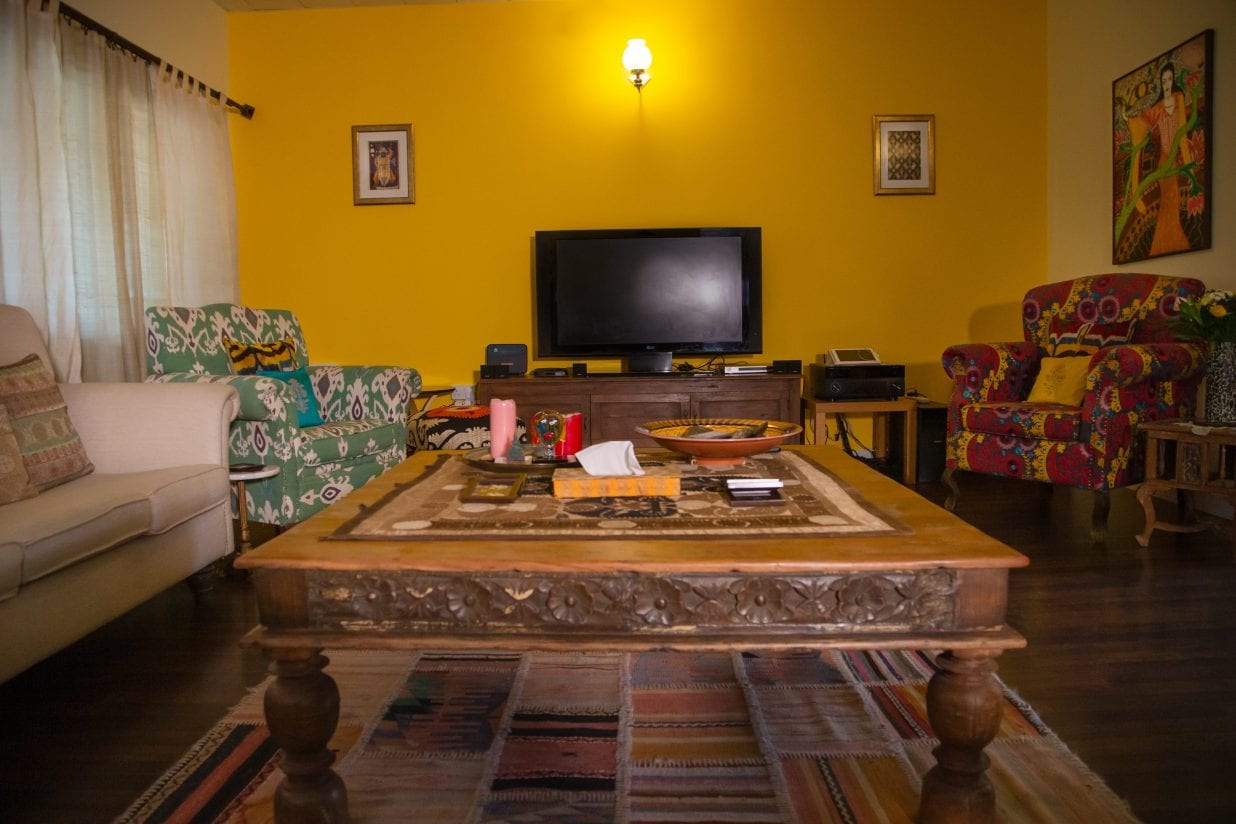
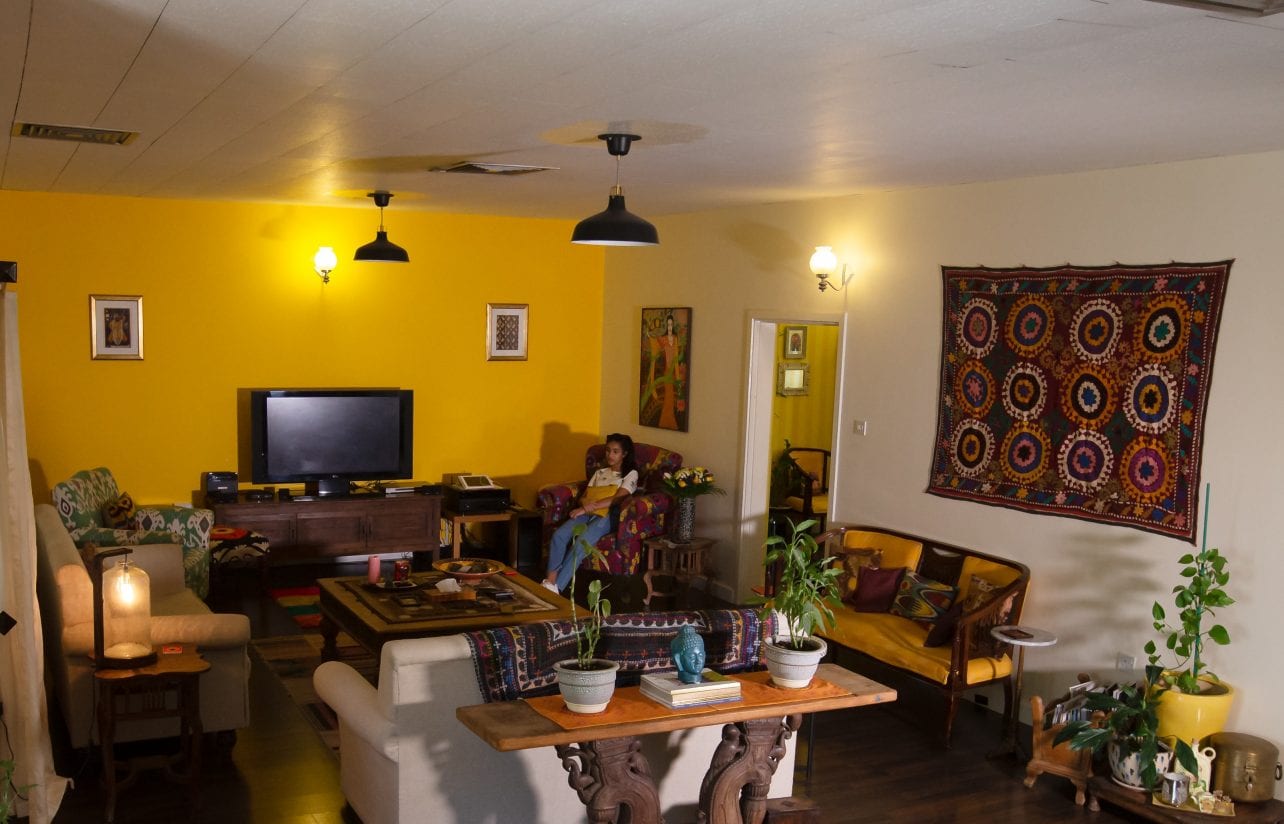 Each of the furniture that Sonali carted from India is solid wood furniture and it took a 40-foot container to load all of her possessions to this home in Doha.
Each of the furniture that Sonali carted from India is solid wood furniture and it took a 40-foot container to load all of her possessions to this home in Doha.
“The look I was looking to create was Boho-eclectic,” says Sonali, trying to classify her interiors into a singular criterion. “It is far from minimalism, a style that I tend to use in my fashion line.”
Sonali stresses that though a few pieces are heavily carved, almost all of them have been given a dull vintage finish and distressed look as she loves straight lines more than the heavy ornate feel projected.
Indian Ikat cushions on cotton fabric, a suzani print as an upholstery on one of the couches, copper artefacts from the south of India, all in resplendent colours, coming together homogenously in heavily carved wooden framework, is a reflection of the artistic sensibilities of the designer who does not shy away from bright colours or antique wooden pieces. A little bit of the owner’s culture and heritage, along with the memories collected over the years with travel insights and souvenirs finds a place of pride in a designer’s home in a country that embraces ethnicities.


